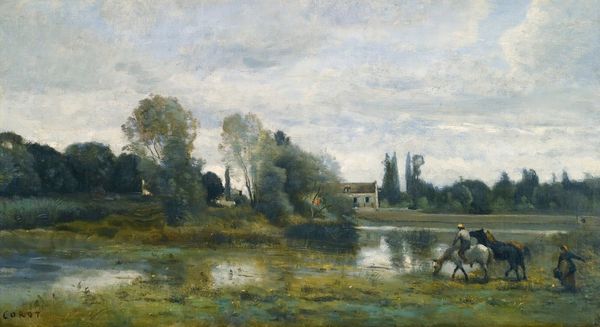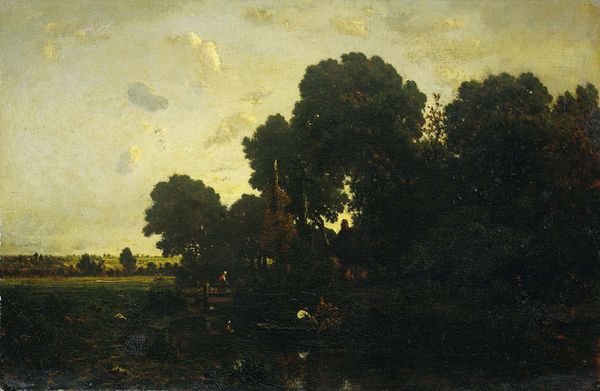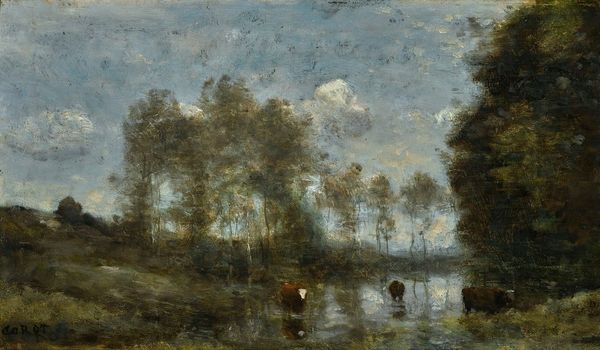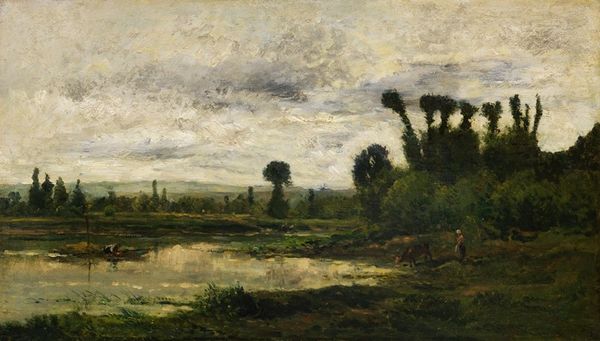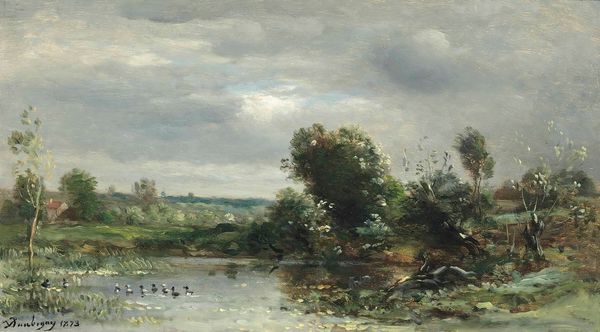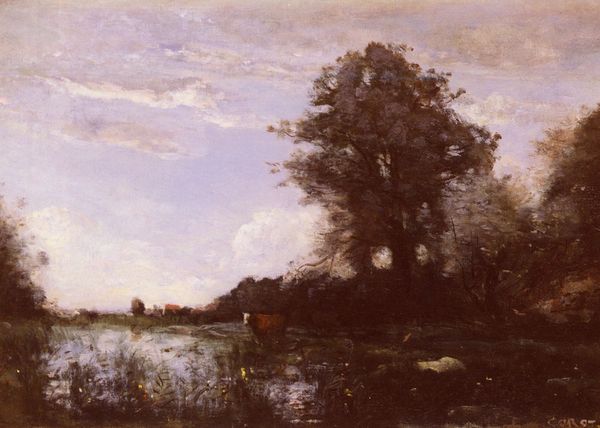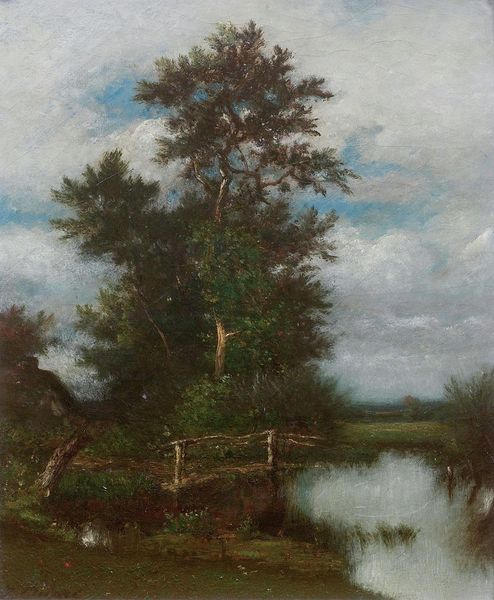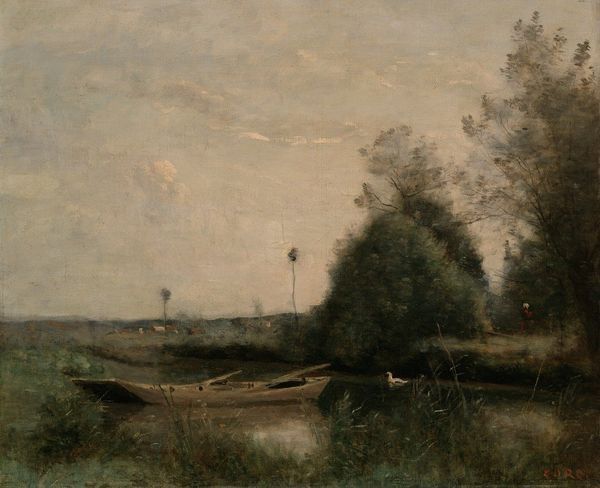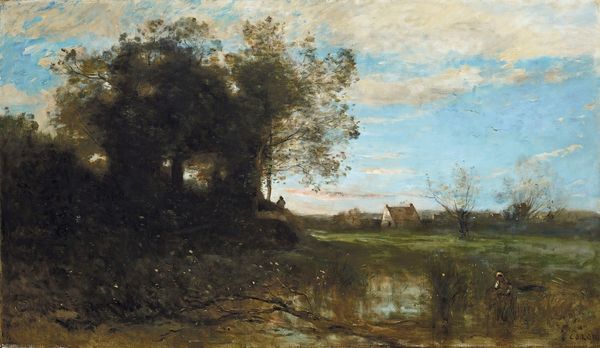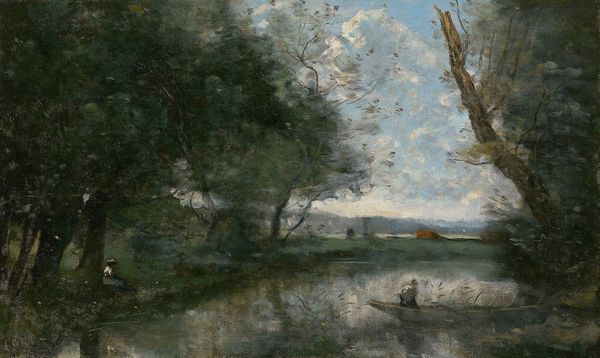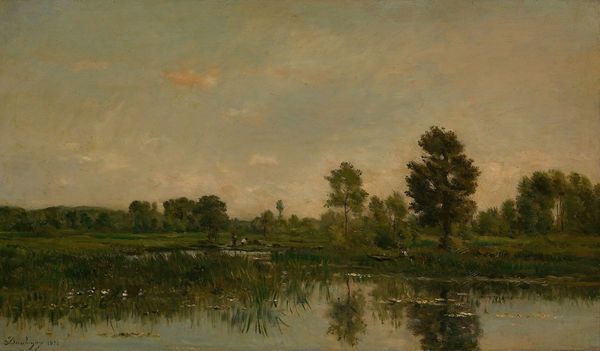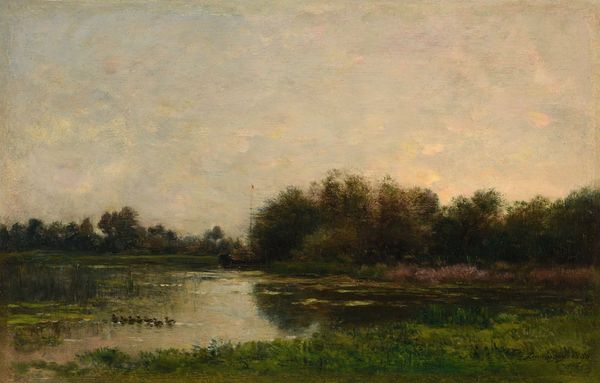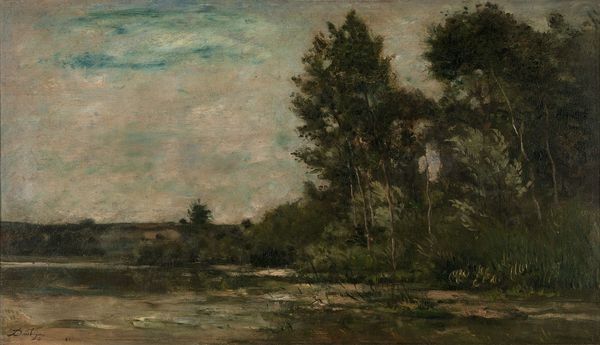
plein-air, oil-paint, impasto
#
impressionism
#
plein-air
#
oil-paint
#
landscape
#
oil painting
#
impasto
Copyright: Public Domain: Artvee
Curator: Jean-Baptiste-Camille Corot’s “Marcoussis, La Mare Aux Vaches,” or "The Pond with Cows," invites us to observe a quiet moment by the water's edge. Editor: Immediately, I notice the light, a muted silvery haze that gives the scene a sort of dreamy stillness. There's a real emphasis on capturing a particular mood. Curator: It's Corot's signature, that atmospheric perspective. The soft impasto of oil paint, applied en plein air, contributes so much to the light's ethereal quality, as he translated the sensation of being immersed in this place, capturing the light that seems to tremble on the water. Editor: It does suggest that he painted it in place rather than from memory later. I'm fascinated by the materiality of this scene. The subject, of course—cows, ponds, nature—fits perfectly within Corot's landscapes. It reflects the means of the artist but also reflects a romantic era's connection to rural environments. I see the economic base reflected. What else can you tell me? Curator: I think what Corot gives us isn't just a picturesque scene; he lets us taste how the air feels, he almost makes us breathe it. Editor: What a beautifully visceral impression! But there’s a tension here, right? Because for all the attention on pastoral imagery, Corot was a significant figure in French Realism as well as the Barbizon School, responding directly to the social changes driven by industrialization. It's a vision filtered through the material reality of its time. I love seeing the contrast between romanticism and reality, what is present and what he wants us to consider absent. Curator: It's a balance, as many things are in life and art. This feels both incredibly real and deeply imaginative. But it’s been said that Corot always felt like he captured a glimmer, rather than fully explained the dream of an atmosphere. The lack of specific dates allows it to speak more widely through the ages as the artist felt in the field painting it in the moment. Editor: Looking closer, I see layers not only of technique but of meaning too—and a reminder that even the most idyllic scenes can contain layers of industry, commerce, and human presence. The material culture gives another lens. Curator: Absolutely, it makes us contemplate about beauty itself as it exists alongside human intervention, which I suppose is often messy and full of complexities! But always present.
Comments
No comments
Be the first to comment and join the conversation on the ultimate creative platform.

